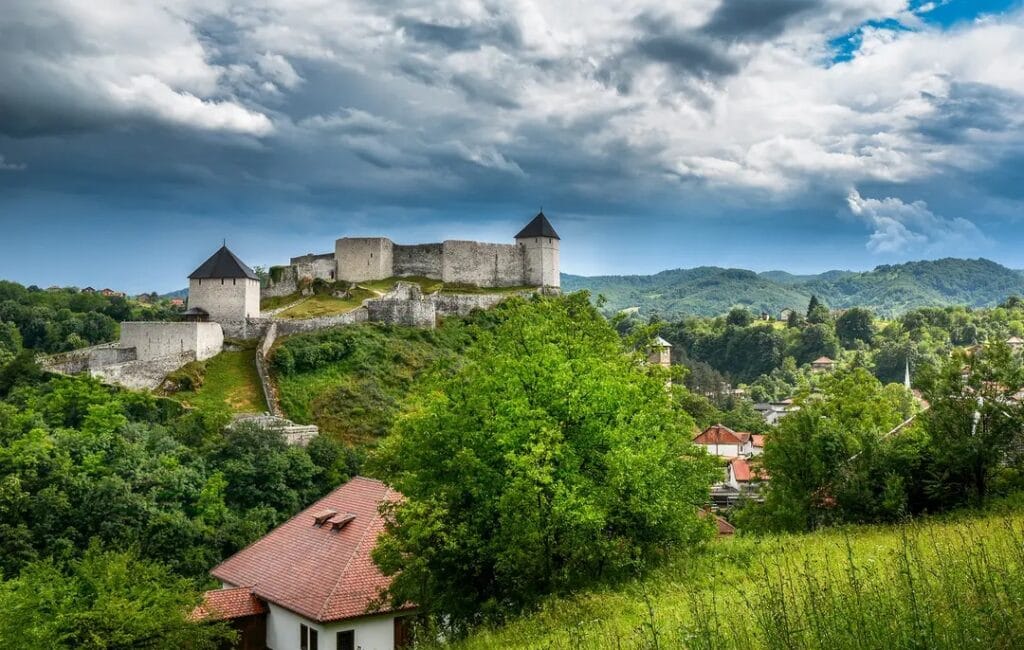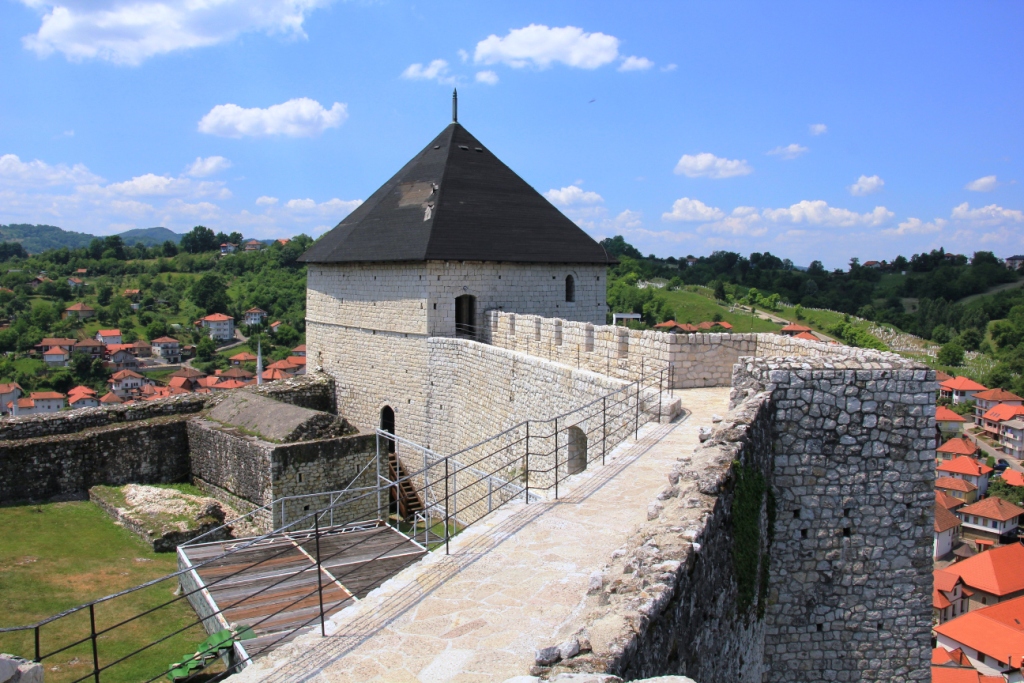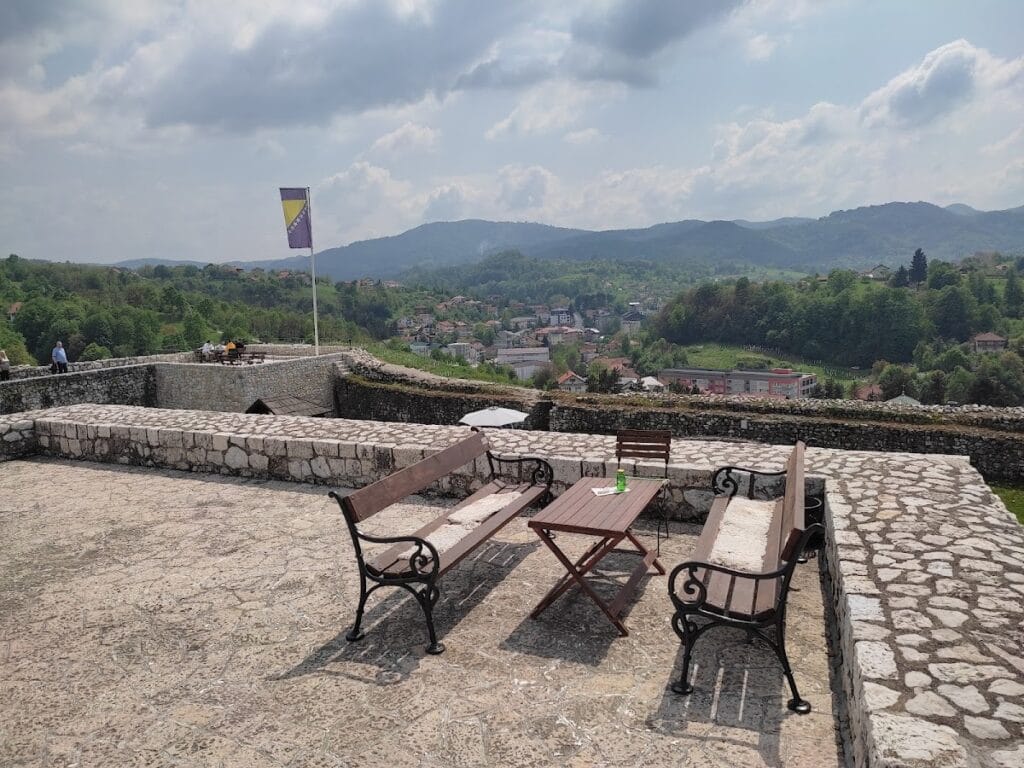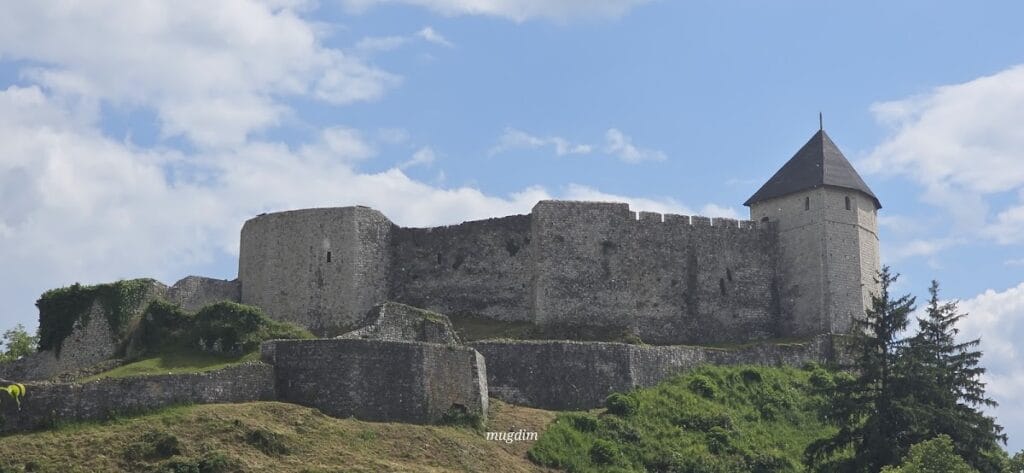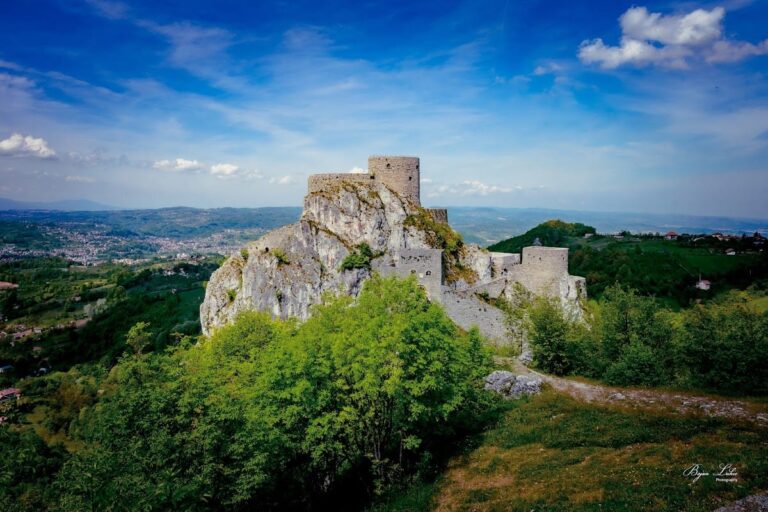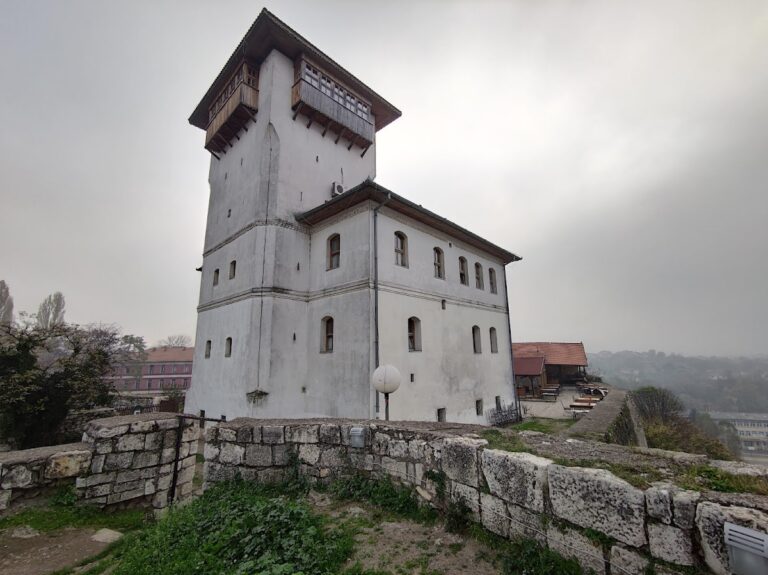Tešanj Castle: A Historic Fortress in Bosnia and Herzegovina
Visitor Information
Google Rating: 4.8
Popularity: Medium
Google Maps: View on Google Maps
Country: Bosnia and Herzegovina
Civilization: Unclassified
Remains: Military
History
Tešanj Castle is located in the municipality of Tešanj, Bosnia and Herzegovina. Its earliest known foundations trace back to the Bronze Age, reflecting a complex history of construction and reconstruction by successive civilizations.
The original fortification at the site was built by the Illyrians, an ancient group inhabiting the western Balkans. This initial stronghold served as a defensive point but was later destroyed. The Romans recognized the strategic value of the location and rebuilt the fortress, repurposing it as a refugium—a place of refuge or shelter during times of conflict. After the Romans, Slavic groups razed the structure once again. In the late medieval period, the noble Zlatonosović family undertook its reconstruction, establishing the foundations of the castle more recognizable from historical records.
The earliest documented mention of the fortress comes from a letter dated March 23, 1461, written by Pope Pius II. That same year, King Stjepan Tomašević granted Tešanj as crown property to his uncle Radivoj, reflecting the site’s administrative and strategic importance in the region.
In 1520, during the turbulent period following the Ottoman expansion into nearby territories, Hungarian forces fleeing the advancing Ottoman army set fire to and destroyed the fortress. However, the castle was subsequently renovated and modernized in the late 17th century. This period corresponded with its increased military significance due to its position near the Ottoman border. Under the reign of Sultan Mustafa (1695–1703), a new lower section of the fortification was added to strengthen its defenses.
The fortress was manned by a permanent Ottoman garrison and famously withstood a three-day siege by the forces of Prince Eugene of Savoy in 1697, resisting capture. By 1840, the castle was abandoned as a military fortification. Nevertheless, it saw reuse during World War II when German forces employed it as a bunker.
Since 2003, Tešanj Castle has been recognized as a national monument of Bosnia and Herzegovina, underscoring its historical and cultural significance.
Remains
Tešanj Castle is perched atop a steep, rocky hill at 305 meters above sea level, offering commanding views over the Tešanjka river and the city center that developed below. The fortress extends across approximately 5,600 to 6,296 square meters, with walls forming a perimeter of around 390 meters. Its length spans 120 meters, while its widest section reaches 80 meters. The defensive walls showcase a building technique typical of medieval Bosnian fortresses, consisting of stone facings filled with broken stones mixed with lime mortar. These walls measure 2.40 meters in thickness, divided into 1.50 meters of solid defense and a 0.90-meter-wide passage within, and rise between 2 and 10 meters in height.
Several towers within the complex attest to the fortress’s phased construction. Notably, the Krnja Tower was erected by the Ottomans on the site of an earlier donjon tower, the central stronghold of the castle. This tower features a large cistern capable of holding 70,000 liters of water, essential for prolonged defense during sieges. Above the cistern, five cannon openings were installed, reflecting the adaptation of the fortress to artillery warfare. Access to Krnja Tower is provided through a thick connecting wall and a small square tower, reached by stone stairs ascending from the courtyard.
Within the fortress, two vaulted bunkers with barrel-shaped roofs were introduced at a later stage, likely to accommodate evolving military needs. The Dizdareva Tower, a lengthy protective wall stretching 90 meters, and a tabiya—a circular fortification irregular in shape with a diameter of 23 meters—were also constructed. This tabiya contains a tunnel running through its center, flanked by casemates, or fortified gun emplacements, on both sides, illustrating a sophisticated design for defense.
A moat was excavated in front of the towers to hinder attackers, with a wooden bridge allowing controlled access at the castle’s main gate. Just below the fortress, on a steep slope above the market area of Tešanj, a clock tower (known locally as sahat-kula) was built around the turn of the 18th century. While the fortress today remains partially preserved, its walls, towers, and internal features bear witness to continuous adaptations and renovations carried out over centuries to meet changing military strategies and technologies.
